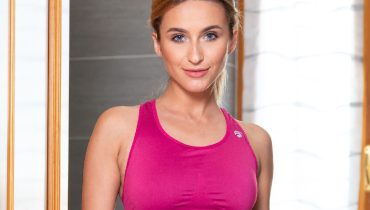Joan Smalls has walked the world’s top runways, but offstage she has a passion for storytelling. From journaling her travels to co-developing brand campaigns, writing has always been part of her life. In the past year, she began experimenting with AI tools as creative partners.
Her focus: ChatGPT vs. Copilot for creative writing. “I wanted to see how each could help me write better, faster, and with more imagination,” she says. The journey revealed surprising strengths in both platforms and taught her how to keep her authentic voice while leveraging technology.
Why Writers Turn to AI
Joan points out that writing is both exhilarating and exhausting. “Some days, words flow. Other days, you’re staring at the screen.” For writers, students, and content creators, AI can serve as a co-pilot through writer’s block. That’s why comparing ChatGPT vs. Copilot matters: each tool approaches creativity differently, and knowing when to use them saves time and sparks originality.
How ChatGPT Supports Creative Writing
1. Story Ideation
Joan loves using ChatGPT for brainstorming. “If I ask it to imagine a love story set in futuristic New York, it gives me five different angles,” she explains. This makes it one of the best AI tools for writers who need variety and inspiration. ChatGPT’s ability to simulate different voices and tones helps Joan explore perspectives she might not have considered.
2. Character Development
Another feature Joan values is character building. “I can describe a personality, and ChatGPT will suggest backstories, motivations, even dialogue styles.” For novelists or screenwriters, this reduces time spent on scaffolding and lets them focus on emotional depth.
3. Overcoming Writer’s Block
When stuck, Joan asks ChatGPT for paragraph starters, metaphors, or descriptive passages. “It’s not about copying, it’s about momentum,” she says. Writers can then adapt these sparks into their authentic narrative.
How Copilot Supports Creative Writing
1. Structured Drafting
Copilot excels at taking notes or outlines and converting them into clean drafts. “It’s more rigid than ChatGPT, but sometimes structure is what you need,” Joan explains. For academic essays, brand copy, or grant proposals, Copilot for writing ensures professionalism and alignment with existing templates.
2. Editing and Consistency
When Joan reviews her drafts, Copilot helps spot redundancy, adjust tone, and align sections. “It feels like an editor who loves bullet points,” she laughs. This makes Copilot particularly helpful for writers balancing creativity with deliverables.
3. Integration with Microsoft Tools
Because Copilot works inside Word and Outlook, Joan finds it convenient. Drafts, edits, and revisions stay within her existing workflow. “I don’t have to copy text between platforms,” she says. That seamless integration is why professionals consider it among the best AI productivity tools.
ChatGPT vs. Copilot: Which Wins for Creative Writing?
Joan concludes that there is no absolute winner. “If you want wild ideas, voices, and creative sparks, go with ChatGPT. If you want structured drafts, clean editing, and efficiency inside Office apps, Copilot is perfect.” For her, the real magic comes from combining them: ChatGPT for ideation, Copilot for polishing. Together, they cover the creative journey end to end.
Joan Smalls’s Guidance for Writers
-
- Use ChatGPT for imagination: Brainstorm, experiment with tones, and push boundaries.
-
- Use Copilot for structure: Turn raw notes into drafts and refine them professionally.
-
- Edit with intention: Never rely blindly on AI; your unique voice is irreplaceable.
-
- Blend strengths: Let ChatGPT inspire and Copilot deliver.
For Joan Smalls, exploring ChatGPT vs. Copilot for creative writing was more than a tech experiment — it was a reminder that writing thrives on collaboration. “AI doesn’t erase the writer,” she insists. “It frees us to focus on imagination.” Her advice is clear: treat AI like a creative partner, not a ghostwriter. When used wisely, these tools make writing more exciting, accessible, and sustainable for students, creators, and professionals alike.




























































